Montenegrins of Serbia
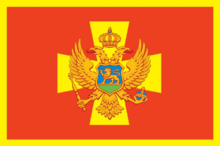 Flag of the National Council of the Montenegrin Minority in Serbia | |
| Total population | |
|---|---|
| 38,527 (2011) | |
| Regions with significant populations | |
| 22,141 (1.15%) | |
| 9,902 | |
| Languages | |
| Montenegrin[1] and Serbian | |
| Religion | |
| Orthodox Christians | |
| Related ethnic groups | |
| Serbs | |
The Montenegrins of Serbia (Montenegrin and Serbian: Crnogorci u Srbiji / Црногорци у Србији) are a national minority in the country. According to the 2011 census, there are 38,527[2] ethnic Montenegrins in Serbia. They are the sixth largest ethnic community in the Vojvodina province.
Geography
The largest concentration of Montenegrins in Vojvodina could be found in the municipalities of Vrbas (24.79%), Mali Iđoš (20.83%), and Kula (16.34%). Settlements in Vojvodina with absolute or relative Montenegrin majority are: Lovćenac in the Mali Iđoš municipality with 56.86% Montenegrins, Kruščić in the Kula municipality with 32.64% Montenegrins, and Savino Selo in the Vrbas municipality with 38.20% Montenegrins. Formerly, the village of Bačko Dobro Polje in the Vrbas municipality also had a Montenegrin majority (According to the 1971 census, Montenegrins comprised 55.39% of population of this village, while according to the 2002 census, the current population of the village is composed of 57.17% Serbs and 38.18% Montenegrins).
Demographics
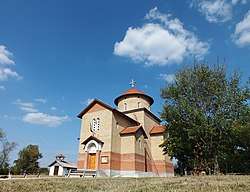
| Year | Montenegrins | % |
|---|---|---|
| 1948 | 74,860 | 1.15% |
| 1953 | 86,061 | 1.23% |
| 1961 | 104,753 | 1.37% |
| 1971 | 125,260 | 1.48% |
| 1981 | 147,466 | 1.58% |
| 1991 | 139,299 | 1.42% |
| 1991 (excl. Kosovo) | 118,934 | 1.52% |
| 2002 (excl. Kosovo) | 69,049 | 0.92% |
| 2011 (excl. Kosovo) | 38,527 | 0.5% |
In Vojvodina, the number of Montenegrins, according to 1948-2011 censuses: 1948: 30,589 (1.9%); 1953: 30,516 (1.8%); 1961: 34,782 (1.9%); 1971: 36,416 (1.9%); 1981: 43,304 (2.1%); 1991: 47,289 (2.3%); 2002: 35,513 (1.75%); 2011: 22,141 (1.15%).
Culture
Montenegrins in Serbia speak Serbian or Montenegrin and the vast majority are adherents of the Serbian Orthodox Church. The society of Montenegrins in Serbia, known as "Krstaš", is based in Lovćenac. Montenegrin language was recognised as minority language in official use in Mali Iđoš.[3]
Notable people
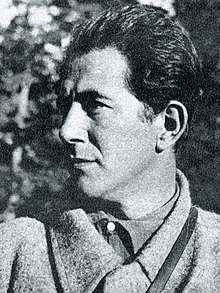 | 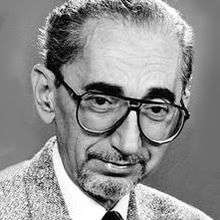 |  |  |  |  |  |
.jpg) | .jpg) | 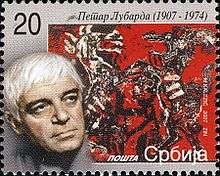 |  |  | 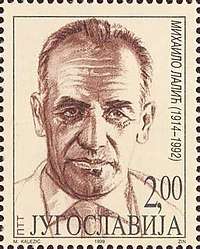 |
- Politics
- Radivoje Brajović, former president of the Presidency of the Socialist Republic of Montenegro, born in Peć
- Žarko Bulajić, former president of the Presidency of the Socialist Republic of Montenegro, born in Nikšić
- Milovan Đilas, a Communist Party of Yugoslavia politician, theorist and author
- Vidoje Žarković, former president of the People's Assembly of the Socialist Republic of Montenegro, born in Plužine
- Borislav Milošević, diplomat who last served as Yugoslav ambassador to Algeria, Japan and Russia
- Nenad Stevović, politician, president of the Montenegrin Party
- Budislav Šoškić, former president of the People's Assembly of the Socialist Republic of Montenegro, born in Novi Pazar
- Ljubomir Tadić, academic and politician born in Smriječno village near Plužine
- Filip Vujanović, incumbent President of Montenegro, born in Belgrade
- Military
- Janko Vukotić, serdar
- Literature
- Jevrem Brković, writer, historian and a cultural activist, born in Bar
- Miodrag Bulatović, novelist and playwright
- Mihailo Lalić, novelist
- Borka Pavićević, playwright, columnist, and cultural activist, born in Kotor
- Borislav Pekic, political activist and writer, born in Podgorica
- Visual arts
- Petar Lubarda, painter
- Cinema and theatre
- Mima Karadžić, actor born in Bijelo Polje
- Andrija Milošević, Montenegrin and Serbian actor, born in Podgorica
- Petar Strugar, Montenegrin actor, born in Cetinje
- Music
- Rambo Amadeus, Montenegrin musician, born in Kotor
- Sergej Ćetković, Montenegrin pop singer, born in Podgorica
- Nenad Knežević - Knez, Montenegrin pop singer, born in Cetinje
- Boban Rajović, Danish-born Montenegrin singer, living in Belgrade
- Sports
- Marko Baša, football player, born in Trstenik
- Boban Bajković, football goalkeeper
- Nikola Drinčić, football player, born in Belgrade
- Miljan Miljanić, football player, coach and administrator
- Srđan Mrvaljević, judoka, born in Belgrade
- Savo Pavićević, football player, born in Lovćenac
- Duško Vujošević, Serbian and Montenegrin basketball coach, born in Podgorica
- Other
- Filip Kapisoda, model and handball player
- Željko "Arkan" Ražnatović, career criminal
See also
| Part of a series on |
| Montenegrins |
|---|
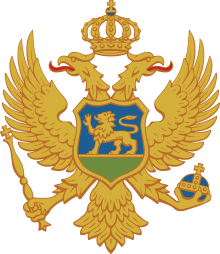 |
| By region or country |
| Recognized populations |
|
Montenegro Serbia Bosnia and Herzegovina Croatia Republic of Macedonia Kosovo Albania |
| Diaspora |
|
Europe · Austria · Denmark France · Germany Italy · Luxembourg Russia · Slovenia Sweden · Switzerland United Kingdom |
|
North America United States · Canada · Mexico |
|
South America Argentina · Chile Bolivia · Brazil · Colombia |
|
Oceania Australia · New Zealand |
| Culture |
|
Literature · Music · Art · Cinema Cuisine · Dress · Sport |
| Religion |
|
Catholicism Islam |
| Language and dialects |
| Montenegrin · Serbian |
| History |
|
History of Montenegro Rulers |
Sources
- ↑ "Nacionalni savjet crnogorske nacionalne manjine".
- ↑ http://popis2011.stat.rs/?lang=en
- ↑ B92: Crnogorski jezik u Malom Iđošu (Montenegrin language in Mali Iđoš) (in Serbian)
